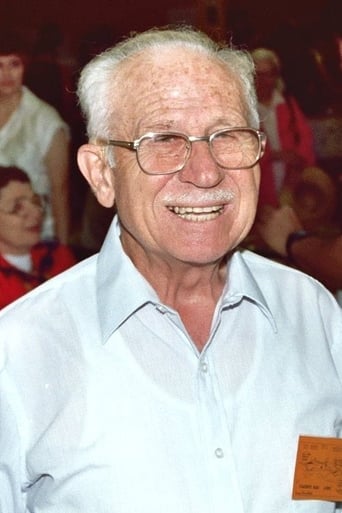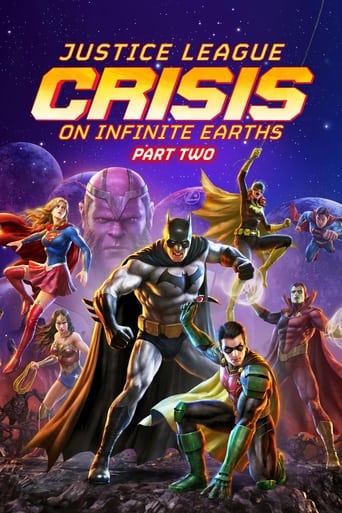Hellen
I like the storyline of this show,it attract me so much
Matialth
Good concept, poorly executed.
AshUnow
This is a small, humorous movie in some ways, but it has a huge heart. What a nice experience.
Fatma Suarez
The movie's neither hopeful in contrived ways, nor hopeless in different contrived ways. Somehow it manages to be wonderful
TheLittleSongbird
The Vanishing Private is yet another example of why I love Disney and Donald Duck so much. It is not one of my favourite Donald cartoons, but it is still great, with beautiful animation and catchy, jaunty music promising to draw you right in and doing so. The story is slightly routine, but fast-paced and interesting, and the physical humour and gags are funny and imaginative. Donald is likable and well drawn and Pete is a great contrast, managing to even have more of a temper than Donald. The voice acting is spot on, both from Clarence Nash and Billy Bletcher. All in all, fun, entertaining, slightly routine and technically impressive. 9/10 Bethany Cox
Julia Arsenault (ja_kitty_71)
Like I said, Donald Duck has been one of my favorite characters from Disney. This short is my favorite W.W. II Propaganda cartoon along with "Home Defense" that also features Donald but with his nephews Huey, Dewy and Louie; also "Private Pluto" from 1943 starring well...Pluto the Pup of course.I love it when Donald (I mean Private Duck) is invisible and he gets cover in flowers. But the flower petals show off his profile, also well as his eyes. And when Sgt. Pete sees him he scrapes them off and disappears. I also love it when the invisible Donald is skipping rope while singing "Here We Go 'Round the Mulberry Bush." So overall, I really love this cartoon.
Shawn Watson
After being instructed to paint a huge cannon in camouflage colors Donald paints it in very noticeable spots and stripes. His drill sergeant obviously goes mad at him. Told to repaint it, Donald goes for a wander and comes across some experimental invisible paint. He wasn't told NOT to use it so why not?Sure enough the paint works and he has a mighty good time fooling the Sergeant with typical invisible prankster tricks and singing his 'Army is not the Army anymore' song. Yes, it is another one of Disney's wartime propaganda efforts. Making it seem like the Army is nice and friendly (not an institution that goes on killing sprees) and that invisible paint really is something that they mess around with.Good for a few laughs, not to be taken as a snapshot of actual army life.
Ron Oliver
A Walt Disney DONALD DUCK Cartoon.Some highly experimental invisible paint allows Donald to wreck revenge upon bullying Sergeant Pete.THE VANISHING PRIVATE is a fine example of a wartime Duck cartoon - fast and very funny. With both Donald & Pete as members of the U. S. Army it is amazing that the Allies managed to win the War. Clarence Nash provides the Duck with his unique voice.Walt Disney (1901-1966) was always intrigued by pictures & drawings. As a lad in Marceline, Missouri, he sketched farm animals on scraps of paper; later, as an ambulance driver in France during the First World War, he drew comic figures on the sides of his vehicle. Back in Kansas City, along with artist Ub Iwerks, Walt developed a primitive animation studio that provided animated commercials and tiny cartoons for the local movie theaters. Always the innovator, his ALICE IN CARTOONLAND series broke ground in placing a live figure in a cartoon universe. Business reversals sent Disney & Iwerks to Hollywood in 1923, where Walt's older brother Roy became his lifelong business manager & counselor. When a mildly successful series with Oswald The Lucky Rabbit was snatched away by the distributor, the character of Mickey Mouse sprung into Walt's imagination, ensuring Disney's immortality. The happy arrival of sound technology made Mickey's screen debut, STEAMBOAT WILLIE (1928), a tremendous audience success with its use of synchronized music. The SILLY SYMPHONIES soon appeared, and Walt's growing crew of marvelously talented animators were quickly conquering new territory with full color, illusions of depth and radical advancements in personality development, an arena in which Walt's genius was unbeatable. Mickey's feisty, naughty behavior had captured millions of fans, but he was soon to be joined by other animated companions: temperamental Donald Duck, intellectually-challenged Goofy and energetic Pluto. All this was in preparation for Walt's grandest dream - feature length animated films. Against a blizzard of doomsayers, Walt persevered and over the next decades delighted children of all ages with the adventures of Snow White, Pinocchio, Dumbo, Bambi & Peter Pan. Walt never forgot that his fortunes were all started by a mouse, or that childlike simplicity of message and lots of hard work always pay off.


